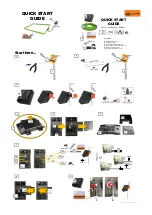
INTRODUCTION
FEATURES
I-E96-607A
1 - 5
module. The circuit board contains the serial communication
circuitry necessary for it to communicate with another INIIT02
module.
Two captive latches on the INIIT02 faceplate secure the module
in the MMU card cage. The faceplate contains eight CPU LEDs,
a red/green status LED, and a stop/reset switch.
Interface termination is through a cable connection between P3
of the INIIT02 module and an NTMP01 Multi-Function Proces-
sor Termination Unit or NIMP01 Multi-Function Processor Ter-
mination Module. INIIT02 module power and I/O expander bus
connections follow the same connector assignments common to
most INFI 90 modules (P1 for power, P2 for I/O expander bus).
INIIT03 INFI-NET to INFI-NET Transfer Module
The INIIT03 INFI-NET to INFI-NET Transfer Module serves as
the link between two local INFI-NET communication loops. It
holds the node database and is responsible for transferring all
messages between loops. Messages include exception reports,
configuration data, control data and system status. This mod-
ule communicates directly with the NIS module on each loop of
the interface.
The INIIT03 module consists of one printed circuit board that
occupies one slot in the module mounting unit. The circuit
board contains the circuitry necessary for it to pass communi-
cation from the central communication loop to the satellite
communication loop.
Two captive latches on the INIIT03 module faceplate secure the
module in the module mounting unit. The faceplate contains 16
CPU LEDs, a red/green status LED, and a stop/reset switch.
FEATURES
•
INFI-NET provides a plantwide communication network.
INFI-NET time synchronizes the control process plantwide.
•
Each node can operate independently of other INFI-NET
nodes. INFI-NET communication modules provide localized
start-up/shutdown on power failure without operator
intervention.
•
Response time is fast. The ten-megabaud loop communica-
tion rate gives timely information exchange.
•
The INFI-NET interface modules handle four message
types: Broadcast, time synchronization, multicast and NIS
poll. All messages contain cyclic redundancy check codes
(CRC) and checksums to insure data integrity.
















































